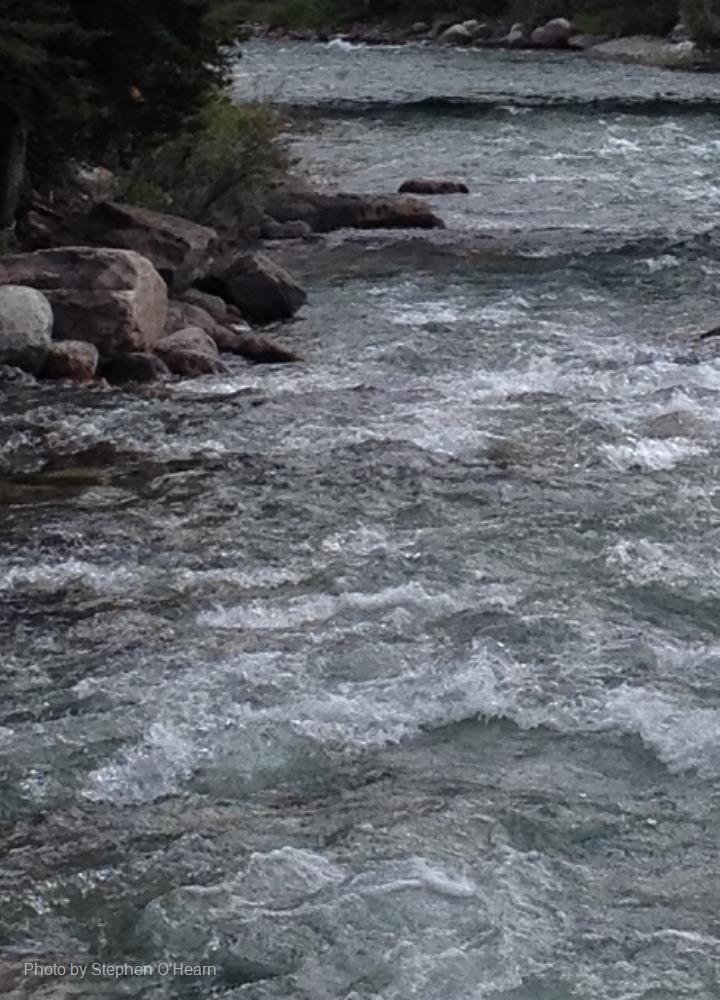
Related items loading ...
Section 1: Publication
Publication Type
Thesis
Authorship
Leroux, N.
Title
Mass and Heat Flow Through Snowpacks
Year
2018
Publication Outlet
University of Saskatchewan
DOI
ISBN
ISSN
Citation
Leroux, N. (2018). Mass and Heat Flow Through Snowpacks. University of Saskatchewan. Thesis
Abstract
Accurate estimation of snowmelt runoff is of primary importance in streamflow prediction for water management and flood forecasting in cold regions. Lateral flow, preferential flow pathways, and distinctive wetting and drying water retention curves in porous media have proven critical to improving soil water flow models; the most sophisticated physically based snowmelt models only account for 1D matrix flow and employ a single drying water retention curve for both drying and wetting snowpacks. Thus, there is an immediate need to develop snowmelt models that represent lateral and preferential flows, as well as full capillary hysteresis to examine the potential to improve snowmelt hydrological modelling. In this dissertation, the primary objective is to improve understanding and prediction of water flow through snow by investigating the formation of preferential flow paths and the coupling of heat and mass fluxes within snow. Of particular interest is the prediction of capillary pressure at macroscale, as it is of importance for simulating preferential flow in porous media. A novel 2D numerical model is developed that enables an improved understanding of energy and water flows within deep heterogeneous snowpacks on flat and sloping terrains. The numerical model simulates vertical and lateral water flow through snow matrix and preferential flow paths, and accounts for hysteresis in capillary pressure, internal energy fluxes, melt at the surface, and internal refreezing. Implementing a water entry pressure for initially dry snow was necessary for the formation of preferential flow paths. By coupling the simulation of preferential flow with heat transfer, ice layer formation was realistically simulated when water infiltrated an initially cold snowpack. Heat convection was added to the model and coupled to the energy balance at the snow surface; the transfer of heat by topography-driven airflow affected the estimated snow surface temperature by transporting thermal energy from the warm snow-soil interface to the upper snowpack. Comparisons of the model meltwater flow predictions against snowmelt field data revealed limitations in the current theories of water flow through snow, such as the use of a capillary entry pressure in the snow water retention curve that is limited to high-density snow. This suggested further concepts that would improve the representation of capillary pressure in snow models. This improved model, which considers a dynamic capillary pressure, gave better results than models based on previous theories when simulating capillary pressure overshoot. The research demonstrates how heterogeneous flow through snow can be modelled and how this research model furthers understanding of snowmelt flow processes and potential improvements in snowmelt-derived streamflow prediction.
Plain Language Summary
Section 2: Additional Information
Program Affiliations
Project Affiliations
Submitters
Publication Stage
Published
Theme
Presentation Format
Additional Information
PhD, University of Saskatchewan, Boreal Water Futures, Transformative Sensor Technologies and Smart Watersheds


 GWFNet
GWFNet Master
Master Data
Data Research
Research Map
Map
 Advanced
Advanced Tools
Tools
 . . .
. . .
 Metadata Editor
Metadata Editor
 Record List
Record List
 Alias List Editor
Alias List Editor
 Legacy sites
Legacy sites